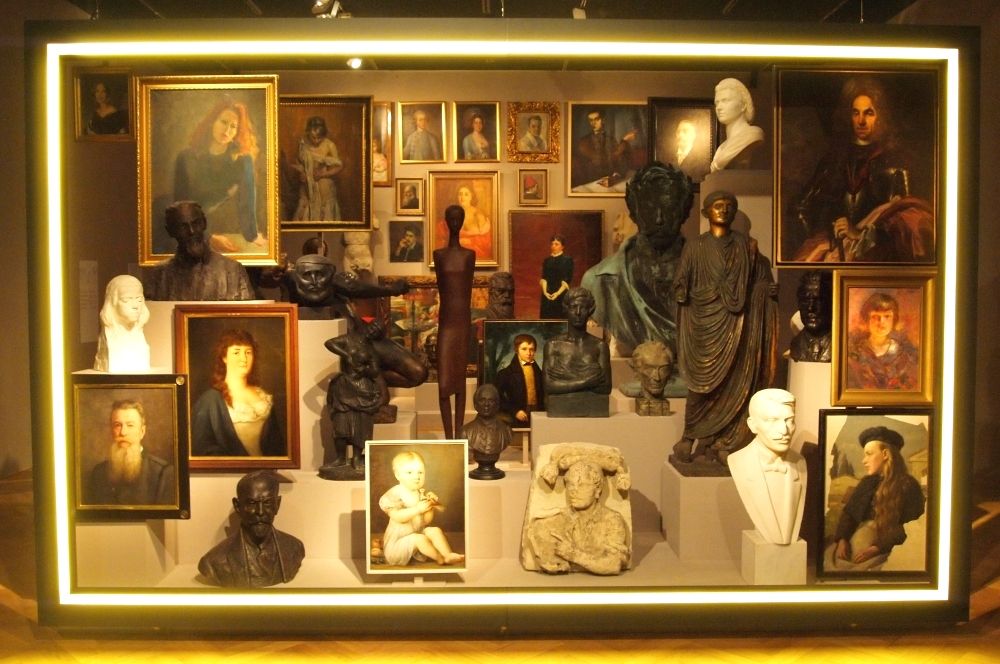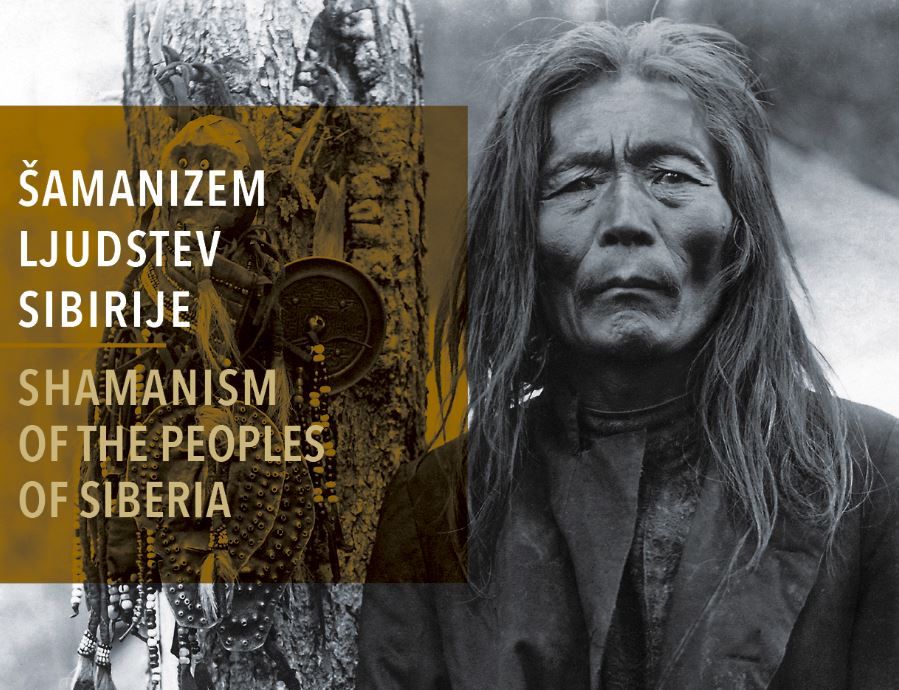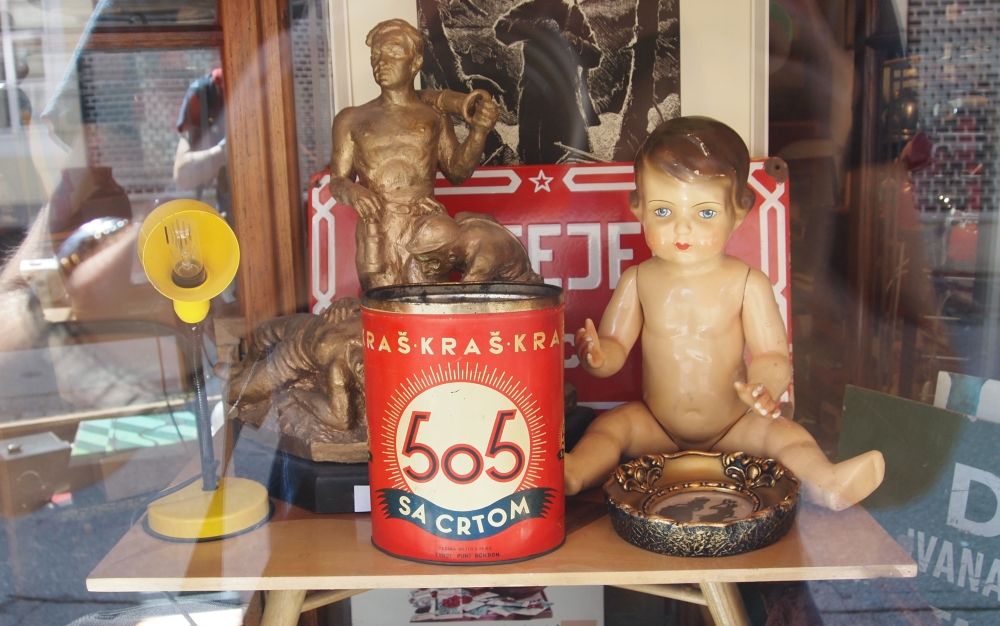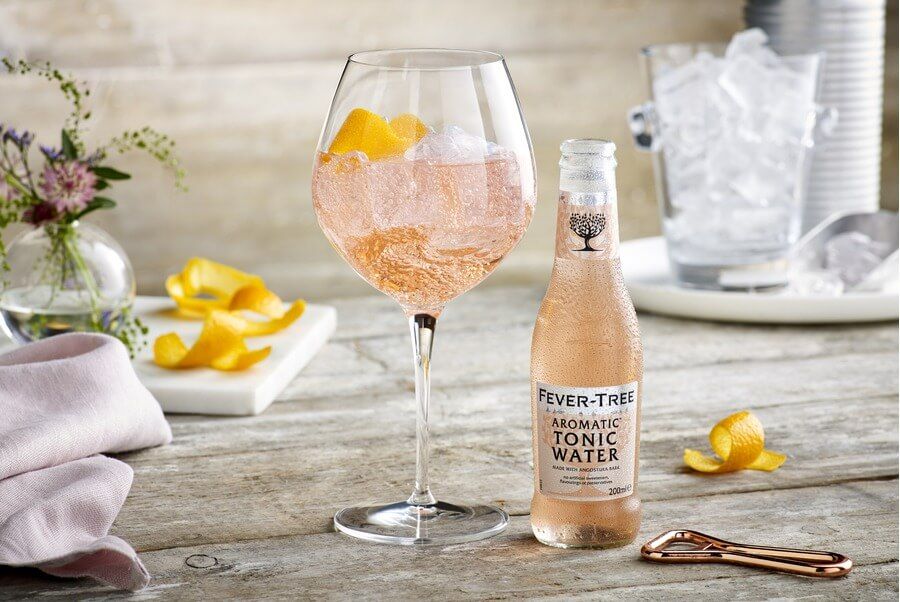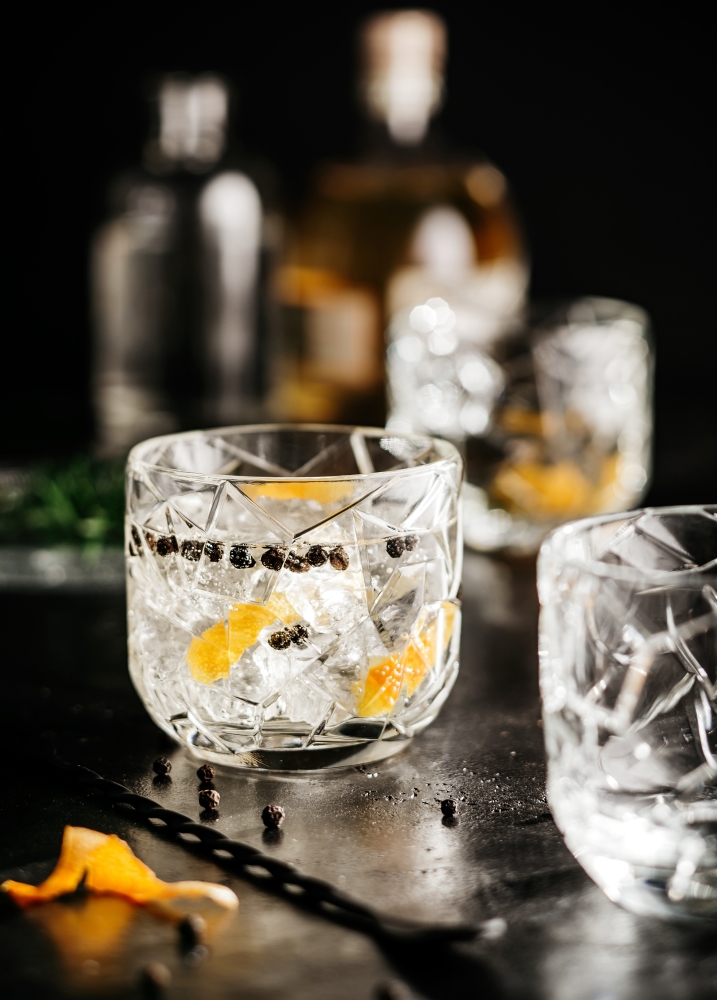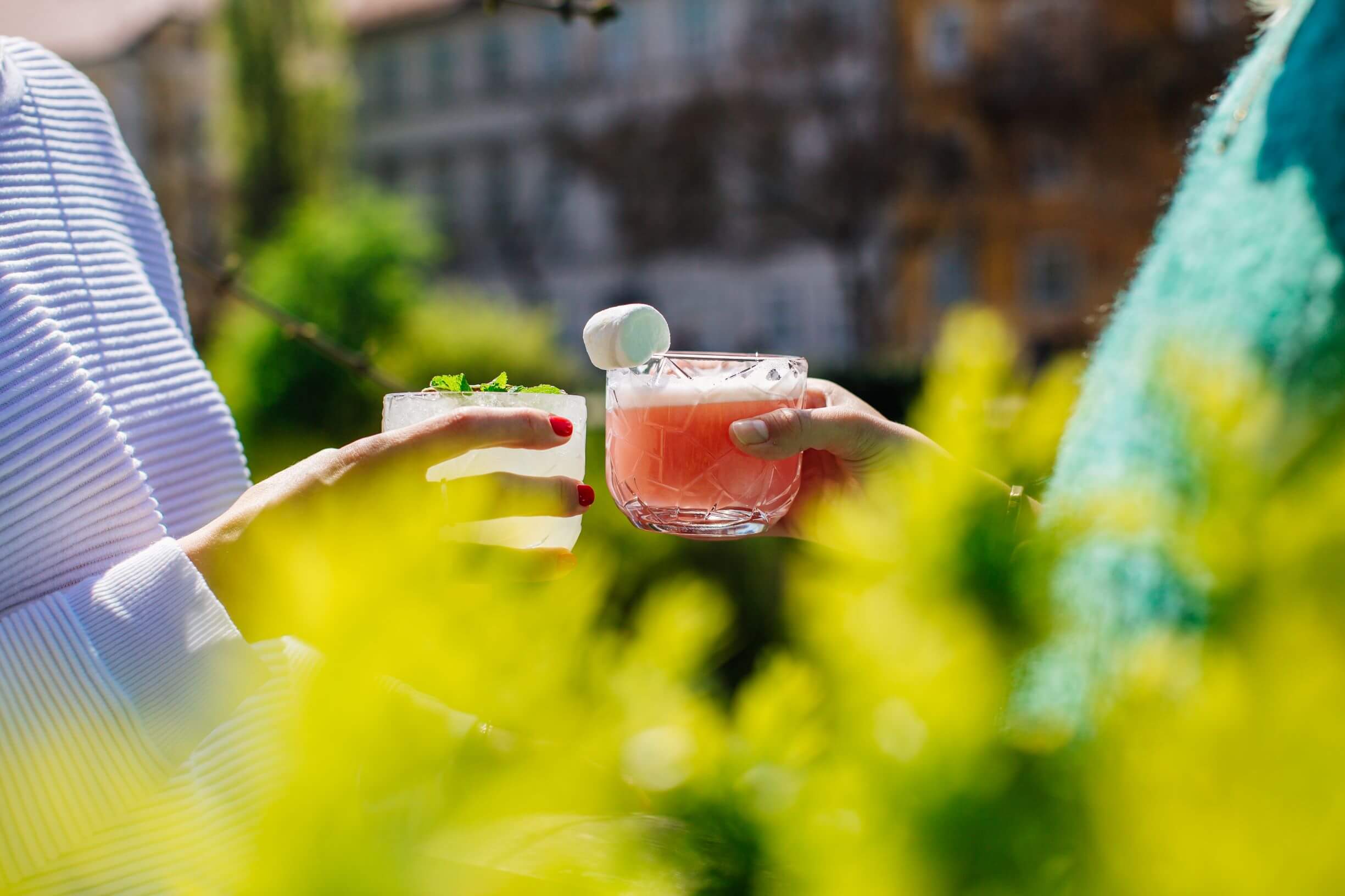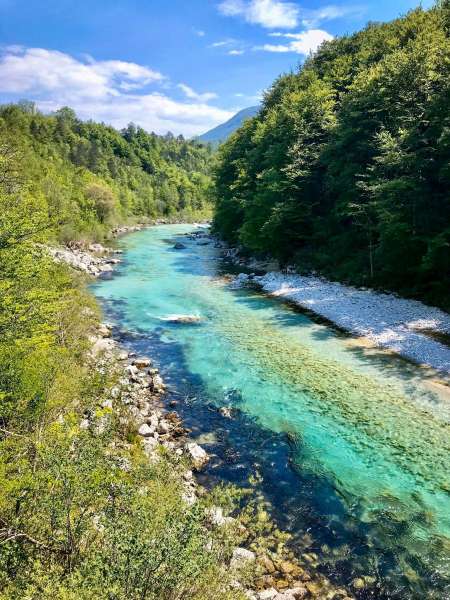News
STA, 27 May 2019 - Political analysts believe the opposition Democrats (SDS/EPP) are in a way a loser of this year's EU vote even if their joint slate with the SLS has won three MEPs and the largest share of the vote. Andraž Zorko and Rok Čakš have however pointed to the success of the Social Democrats (SD/S&D), which have gained one seat.
Although the victory of the joint slate of the SDS and the People's Party (SLS) is convincing, the SDS is actually a loser: it will have one MEP less, since the third one is a member of the SLS, Zorko of pollster Valicon told the STA.
"Even without pairing up with the SLS, the SDS would have won enough votes to secure three seats", as was the case in the 2014-2019 term, believes Zorko.
Agreeing that three SDS+SLS seats somewhat overshadowed the fact that compared to 2014-2019, the SDS has lost one MEP, Čakš believes that by joining forces, the SDS+SLS "took the key step towards victory". He noted the SLS had contributed one MEP and added a significant 5% to the outcome.
Zorko believes the Social Democrats (SD) may be considered the biggest winner, not only picking up an extra seat but nearly trebling the number of votes compared to five years ago.
On the home ground, the SD's result strengthens this coalition party against the LMŠ of PM Marjan Šarec and further weakens the position of the coalition Pensioners' Party (DeSUS) and especially of the Modern Centre Party (SMC), said Domovina portal editor Čakš.
Both Zorko and Čakš, meanwhile, believe the Marjan Šarec List (LMŠ) did well, winning two seats in its first EU elections.
"The LMŠ has broken through with two MEPs apart from winning around 74,000 votes, which is an above-average index compared to the general elections," said Zorko.
The analysis are however unanimous in that the opposition Left is the biggest loser, having made several mistakes during the campaign.
"It had an excellent starting position and a spitzenkandidat at EU level, but with awkward moves during the campaign it squandered a seat it was practically already secured," said Čakš.
Zorko believes the Left's biggest mistake was its first-seeded candidate, MP Violeta Tomić, who did not do well in the EU arena.
Another loser is according to Zorko the Pensioners' Party (DeSus) and its leading candidate, outgoing MEP Igor Šoltes.
"It actually lost twice," said Zorko, noting DeSUS lost a seat it had in 2014-2019 (its MEP Ivo Vajgl did not stand for re-election) and Šoltes lost his own seat.
The election outcome has also brought change to the Slovenian centre-right parties, as the centre-right has lost one seat to have four, just as the centre-left parties.
Čakš attributed the fact that the centre-left had gained one seat to its successful campaign in districts where it is strong.
Otherwise there are no major winners or losers among other parties, though Zorko pointed to a small victory for the SMC.
Although its election result is relatively poor, it regained the seat in the Slovenian parliament it lost when its MP Milan Brglez defected to the SD.
Since he was now elected MEP, his seat will be filled by a SMC stand-in deputy because he was elected on the SMC slate last year.
With one MEP, the NSi is where it was five years ago, the only difference being that its new MEP is a woman. "They lost nothing by not joining forces with the SLS, but they were not far from winning a second MEP," said Zorko.
And it was perhaps premature to put a member of the Slovenian minority on the slate in Slovenia, Zorko commented on the Alenka Bratušek Party's (SAB) choice of its frontrunner Angelika Mlinar. "The experiment has fallen through."
STA, 27 May 2019 - The conservative list of the Democrats (SDS) and People's Party (SLS) won Sunday's EU election in Slovenia ahead of two leftist coalition parties, but the conservative bloc lost some ground overall as voters delivered a mixed message that was neither a rejection of politics-as-usual nor an embrace of populism.
The SDS+SLS list won 26.5% of the vote and three MEPs, the coalition Social Democrats (SD) and Marjan Šarec List (LMŠ) got two MEPs each with 18.6% and 15.6%, respectively, with the opposition New Slovenia (NSi) getting 11.1% and one seat.
MEPs Milan Zver, Romana Tomc and Franc Bogovič won re-election on the SDS+SLS slate, and Tanja Fajon was re-elected MEP for the SD. The remaining four will be novices.
Somewhat surprisingly, Milan Brglez, a former speaker of parliament, was elected second MEP from the SD slate thanks to preferential votes.
For the LMŠ, front-runner Irena Joveva and second-placed Klemen Grošelj were elected, while Ljudmila Novak will return to Brussels after ten years as the only deputy for the NSi.
The SDS declared resounding victory, with party leader Janez Janša stressing that this was the result of the only tie-up between two parties in this election, one which could also serve as a model for future ballots.
Speaking about the third election victory for the party in a year, Janša stressed that this was the only list to join forces for this election and deservedly won a plurality of the vote.
The LMŠ counts its performance a success as well, having risked it all by rejecting a joint liberal list with the Modern Centre Party (SMC) and Alenka Bratušek Party (SAB).
Prime Minister Marjan Šarec said the party had succeeded with a platform-based campaign instead of dealing with others. "We're also happy that this campaign proved to be successful for the parties which feel Europe, which do not ostracise."
The SD doubled their number of MEPs as Fajon, who will serve her third term, will be joined by Brglez, a political science professor who served as speaker of parliament in 2014-2018.
"I'm very happy that we've managed to double our seats and that we're going back with two MEPs... I hope we'll be able to form a progressive majority in the European Parliament, allowing us to achieve the changes we want," said Fajon.
The Left and DeSUS were major surprises, winning respectively 6.35% and 5.65% even though both were projected to be much closer to winning a seat and DeSUS having had an MEP in the 2014-2019 term.
But while Left leader Luka Mesec acknowledged the outcome was a disappointment, DeSUS leader Karl Erjavec said the result was not bad.
The other parliamentary parties performed dismally as well. The National Party (SNS) and the SAB were virtually tied at 4.01%. The Modern Centre Party (SMC) was far behind with 1.58%, having been overtaken by two green parties and the far-right Homeland League (DOM).
Overall, the election produced a slight shift as the conservative camp went from having five MEPs to four, with the liberal-left bloc picking up a seat thanks to the SD.
Analyst Andraž Zorko said the SDS was actually the loser of the election despite the overall win, as they will have one MEP less, while the SD may be considered the biggest winner, not only picking up an extra seat but nearly trebling the number of votes compared to five years ago.
The vote also allayed fears about a feared populist surge, as the most hard-line parties barely made a dent.
The populist SNS won a slightly smaller share of the vote than in last year's general election, an indication that it has limited appeal, while the hard-right Homeland League (DOM), which campaigned on a radically anti-immigration platform, got less than 2% of the vote.
Turnout, at 28.3%, was almost four points higher than in 2014 but still well below projections and significantly lower than in the EU on average.
Political analyst Marko Lovec blamed this on parties failing to provide good candidates: instead of fielding good candidates, Slovenian parties used the vote as an opportunity to resolve internal issues.
STA, 26 May 2019 - The joint list of the Democrats (SDS) and People's Party (SLS) won Sunday's EU election in Slovenia ahead of two coalition parties, but the overall balance of power in the Slovenian EU Parliament has shifted to the left.
The SDS+SLS list won 26.5% of the vote and three MEPs, the coalition Social Democrats (SD) and Marjan Šarec List (LMŠ) got two each with 18.6% and 15.6%, respectively, with the opposition New Slovenia getting 11.1% and one MEP seat.
MEPs Milan Zver, Romana Tomc and Franc Bogovič won re-election on the SDS+SLS slate and Tanja Fajon was re-elected MEP for the SD, but the remaining four will be novices.
Somewhat surprisingly, Milan Brglez, former speaker of parliament, was elected second MEP from the SD slate thanks to preferential votes.
For the LMŠ, front-runner Irena Joveva and second-placed Klemen Grošelj will serve in parliament, while Ljudmila Novak will return to Brussels as the only deputy for the NSi.
The SDS declared resounding victory, with party leader Janez Janša stressing that this was the result of the only tie-up between two parties in this election, one which could also serve as a model for future ballots.
Nevertheless, the conservative camp has gone from having five to four MEPs, as the SD picked up one more and the LMŠ got two in what was its first EU vote.
This was despite the fact that the Left and Pensioners' Party (DeSUS) narrowly missed the threshold, respectively with 6.35% and 5.65%, even though both were projected to be much closer to winning a seat.
The National Party (SNS) and Alenka Bratušek List (SAB) were virtually tied at 4.01%. The Modern Centre Party (SMC) was far behind with 1.58%, having been overtaken by two green parties and the far-right Homeland League.
The results are almost final, but several hundred mail-in ballot will be added to the tally in the coming days.
STA, 24 May 2019 - The Prime Minister of North Macedonia Zoran Zaev and an economic delegation will start their two-day formal visit to Slovenia on Monday at the invitation of Slovenian Prime Minister Marjan Šarec. The visit is designed to strengthened the countries' economic cooperation.
The countries have successful relations, maintained at high-level bilateral as well as multilateral meetings, with Slovenia supporting North Macedonia in its efforts to join NATO and the EU.
Since last year's Prespa agreement, which resolved the name dispute with Greece, the Slovenian government has been pointing out that the EU should set the date at the June summit for the start of accession negotiations with North Macedonia.
The Slovenian government believes that North Macedonia has proven itself and demonstrated its resolve to join the EU by solving the long-lasting dispute as well as implementing numerous reforms.
Slovenia regards the strategy of Euro-Atlantic enlargement in the Western Balkans as a way of ensuring security and stability in the region and Europe.
On Monday afternoon Zaev will deliver a lecture titled The Republic of North Macedonia - Success Story at the Ljubljana International Institute for Middle-East and Balkan Studies (IFIMES).
Šarec and Zaev will then address on Tuesday the participants of the Slovenian-North Macedonian Business Forum hosted by the Slovenian Chamber of Commerce. The event will be attended by representatives of some 14 North Macedonian companies and the North Macedonian Chamber of Commerce.
The Parliamentary Speaker Talat Xhaferi of North Macedonia visited Slovenia in February, when Slovenia ratified a protocol on the accession of North Macedonia to NATO as the second country to do so after Greece. Since then, the protocol has been signed by a number of other countries as well, with North Macedonia expecting to become the 30th NATO member already this year.
If you're not in town for the week of this guide (27 May to 2 June, 2019) then you can see all the editions here, and if there's event you want to promote in a future edition of What's on in Ljubljana please get in touch with me at flanner(at)total-slovenia-news.com or try and find me on Facebook. As ever, links to venues are after the following selections…
In town and want to follow the news? Check out our regular morning headlines for Slovenia here.
Lighting Guerrilla will continue to delight after dark at various locations around town until 15 June, so if you see anything strange and lit up, that’s why.
Friday until Sunday the annual street festival of science, Znanstival, will be held in the centre of town and at Hiša Experimentov. It’s a lot of fun, the schedule is here, and you can read more about the background here.
Brin, the Ljubljana gin festival, comes to Križanke on Saturday (1 June), running from noon to midnight with 14 Slovenian gins (and some foreign ones), cocktails, food and more, as detailed here. Slovenia has a long tradition of producing both juniper berries and spirits made from them, so this is well worth checking out if fancy a good G&T.
The weather’s getting better, so the number of outside events and performances is increasing. This Saturday and continuing through the summer are two art markets. ARTish is in Gornji trg square, the far end of the Old Town, where you can buy works from Slovenian artists (09:00 – 18:00). Around the same time, but ending 16:00, there are more local artists along the nearby Breg Embankment, on the other side of the river, under the banner of the Ljubljana Art Market. (While Sunday mornings, same location, see the regular flea / antique market. There's also the famed food market Open Kitchen, every Friday 10:00 to 21:00 in the central market - it's lively, with a good mix of locals and visitors, and even if you're not hungry you'll enjoy it (but go hungry).
Volčji Potok Arboretum (Volčji Potok 3) has a rose garden in bloom until 31 August, nature permitting.
- Cinemas and films
- Clubbing
- Live music
- Theatre and dance
- Harm reduction and drug testing
- Things to do with children
- LGBT+ Ljubljana
- Ljubljana Castle
- Museums and galleries
- Other things to do in Ljubljana
- Daytrips
- Getting around & miscellaneous
Cinemas and films
You can read about all the cinemas in town here, while a selection of what’s playing this week is below, and note that kids' movies tend to be shown in dubbed versions, while non-English language movies for older viewers will have Slovenian subtitles.Parents should also pay attention to Kinobalon, which is Kinodvor's regular weekend series of film screenings and events for children, from babies on up, with special parent/child events, "first time in a cinema" screenings, and babysitting. Learn more about it here, and see the current schedule here.
Kinodvor –This is an arts cinema, not far from the train station, that shows new features as well as hosting the occassional festival.
Kinoteka – And not far from Kinodvor you can find this revival cinema, which shows art house classics along with some deep dives in the archives.
Kino Bežigrad - A relatively small theatre, but one which usually has the biggest of the new releases.
Kolosej -The multiplex out at BTC City Mall shows all the big movies, with well over a dozen titles on the schedule, although note that there are far more movies than screens, so some of the older ones mayonly be playing once or twice a week.
Komuna – The cinema in a basement behind Nama department store shows two or three different features a week, usually including the biggest titles.
Clubbing
Compared to some European capitals it can seem that nightlife in Ljubljana ends rather early, especially along the river, but there are still bars that stay open late and clubs were you can dance until dawn, and perhaps the best place to stumble across something interesting is the legendary Metelkova. Be aware it's a grungy kind of place and not for all tastes, but also that there's considerable variety to found within the various clubs there, from death metal to electropop, gay cabaret to art noise. You can read "the rules" of the place here. And if you're curious about how the place started then read our story, and look at some pictures, about last year's 25th anniversary.
Božidar - DJ events aren't too common here, but when they happen they often have a big name.
Channel Zero – DJs shows here include regular dub nights as well as electronic music.
Gala Hala – Another Metelkova venue, you can sometimes hear bhangra and Bollywood here, but more often funk, hip hop, breakbeat and so on.
Klub Cirkus – The more commercial end of clubland, and a venue that aims to serve the student party scene. Expect house, anthems, and bangers.
Klub K4 – The home of techno, old and new, along with various other electronic genres,
Koncertna Dvorana Rog– There are irregular DJ sets at this underground (not literally) venue at the far end of Trubarjeva cesta, and they range from techno to goa to drum'n'bass.
Orto Bar– 80s and 90s throwback nights can often be found here, along with rock-based DJ sets.
Live music
Balassi Institute – Free Hungarian music, when available, from the Hungarian cultural institute just a short walk downriver from Dragon Bridge.
Cankerjev dom – The main arts venue in the country hosts classical, opera jazz, folk and occassinally pop.
Cvetličarna – Regional pop and rock concerts can be found here.
Channel Zero – This Metelkova venue sees live shows from punk and rock bands, as well as others.
Gala Hala – Another Metelkova venue with indie bands of various styles.
Kino Šiška – One of the top live venues in the city, with a varied programme that include indie, rock, pop, experimental, hip hop, and so on.
Klub Gromka – Live music is often metal, from sludge to stoner, death to thrash, while punk bands also appear, as do others.
Križanke – The venue that hosts the Ljubljana Festival often has classical music, and some rock, in the open air.
Ljubljana Castle – Jazz, funk and pop every Friday night.
Orto Bar– The home of live rock, metal, punk and other guitar-based genres.
Pinelina dnevna soba – LIve music is rare here, but it does happen.
Slovenska filharmonija– Classical music in the centre of town.
SNG Opera and Ballet - As the name suggests, here you'll find the best of opera and ballet in the country.
Španski borci - While dance is more common here, they also have some contemporary and experimental music shows.
Theatre and dance
Cankerjev dom- The main arts venue in the country always has something of interest going on.
Gledališče IGLU - IGLU Theatre – Saturday night this group is usually putting on an English improv show somewhere in town, but it’s generally promoted after this is written, so check the Facebook before putting on your shoes.
Kino Šiška – One of the top live venues in the city also hosts some dance performance, often of the more experimental variety.
Mini Teater Ljubljana –The English schedule of varied performances, for adults and children, for the month is here.
Ljubljana Puppet Theatre - Puppetry has a long and noble tradition in Slovenia, and you can see performances for children and adults (including non-puppet shows) drawing from the Theatre's rich repetoire as well as new productons.
SNG Opera and Ballet - As the name suggests, here you'll find the best of opera and ballet in the country.
Španski borci - The home ofcontemporary dance(and the EnKnapGroup) in Slovenia.
Pocket Teater Studio– There are regular flamenco evenings at perhaps the smallest venue town, but note that the number of seats is very limited, and thus you should make a reservation via pocket.teater@gmail.com or 070 325 522.
Harm reduction and drug testing
Drogart is an organization that aims to minimise harm on the party scene, and offers drug-testing services and reports on their webpage. It’s in Slovene, but you can Google translate it or work things out yourself, and our story on the group is here.You can find the latest warnings on fake drugs and high strength pills and powders (in Slovene) here. However, be aware that all the usual drugs are illegal in Slovenia.CBD is legal, though, and our retailer of choice can be found on Trubarjeva cesta - read more about Sena Flora here.
Things to do with children
You can find our Top 12 list of things to do with kids in Ljubljana here. If want to read more about the philosophy behind the wonderful House of Experiments look here, while our trip to the Museum of Illusions is documented here, and there’s always riverside walks, pizza and ice cream. With regard to the latter, take a look at our guide to six places that serve good ice cream in winter, and thus are serious about the dessert.
Mini Teater Ljubljana – The season sees a lot of puppet performances for children, in Slovene, at this theatre not far from Križanke. The English schedule for the month is here.
Ljubljana Puppet Theatre - The puppet theatre near the Central Market and next to the Castle funicular has a full programme or shows, for children and adults, with the schedule here.
LGBT+ Ljubljana
If you want to learn more about Ljubljana Pride, then take a look at our interview with its president here. If you're looking for more general links on "gay Slovenia", including a history of the scene and various projects, then you can find that here, while our stories about the community can be found here.
Klub Monokel – Thislesbian barin Metelkova is open every Friday, although sometimes there are other events
Klub Tiffany –And the gay bar next door is also open on Fridays, while every Monday until June 2019 there'stangoat 18:00. Other things coulds also be planned, so click on the name to find out.
Pritličje – This seems to be the only "always open" LGBT-friendly cafe / bar / events space in town, and perhaps the country, so it's a good thing it's such a good one, open from morning to night, and with fliers and posters letting you know what's happening outside the narrow confines of, say, a general interest online what's on... guide.
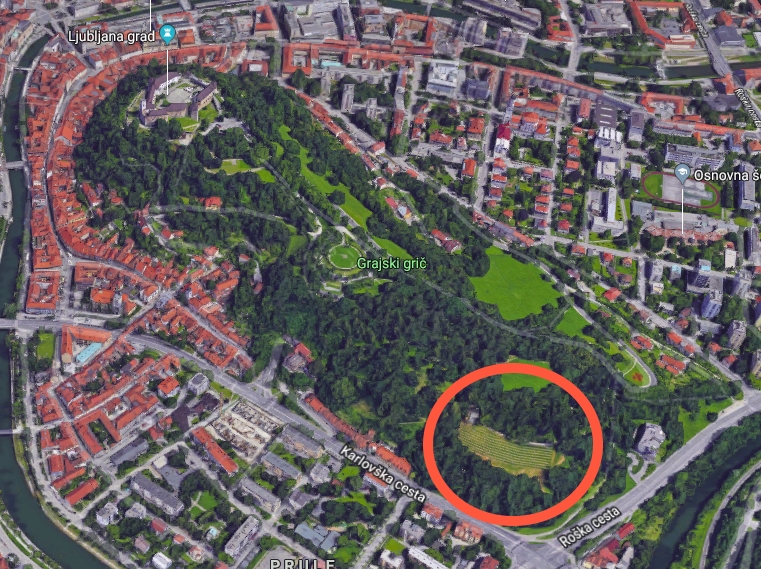
Screenshot from Google Maps, showing the location of the Castle vineyard
Ljubljana Castle
The city’s main attraction is said to be the top tourist draw in the country overall, and to my mind it earns a spot near the top just for the history and views. But beyond that the current owners, the City of Ljubljana, have laid out a varied, interesting and enjoyable programme of events, one that rewards regular revisits. On until 17 November Mighty Guardians of the Past: Castles in the Slovenian Lands, a presentation that delivers on the promise of its title.
I try and get up there every Saturday morning to clear my head and move my feet on the trails, and never tire of that end of the hill. At the other end, where the Castle sits, there’s a lot more than fresh air on offer. There are guided tours, restaurants, a café, Castle museum, puppet museum, a Watchtower you can climb to the highest point in the city, art shows, dances, live music, movies under the stars, festival days and more – enough to reward multiple trips up the hill through the year. All of these activities and events can be found on the Castle website, while on TSN you can see “25 things to know about Ljubljana Castle” here, and “Ten Ways to Enjoy Ljubljana Castle” here.
Museums and galleries
Most public galleries and museums are closed on Mondays, although not the National Museum, and - as noted at the start
Cankerjev dom – A free to see show called Subterranean Worlds, showing cave photography, runs until June 16th.
Plečnik's desk. Photo: JL Flanner
Plečnik’s House is worth a visit if you want to learn more about the architect who gave Ljubljana much of its character, and it's also in a really nice part of town, Trnovo, just a short walk or cycle upriver. Read about our guided tour here.
Balassi Institute – The Hungarian culture centre hasInterlacement – exhibition of Éva Farkasvölgyi and Žiga Okorn, showing tapestries and paintings on until June 14th.Free to enter, this venue is next to a Spar and Hofer, and not far from Dragon Bridge, and always has something interesting going on. Learn more here.
City Museum – The Museum in French Revolution Square an interesting permanent exhibition on the history of Ljubljana, from prehistoric times to the present day, with many artefacts, models and so on that bring the story alive.You can read about my visit here. On until 25 September is Treasures from Russian Museums, an exhibition showcasing more than 80 Russian icons from leading Russian museums.
The Faces of Ljubljana in the City Museum. Photo: JL Flanner
International Centre of Graphic Art – There must be something on here, but in the main the place will be getting ready for the big Biennal, starting 7 June.
Ljubljana Castle on until 17 November Mighty Guardians of the Past: Castles in the Slovenian Lands, a presentation that delivers on the promise of its title.
MAO – The Museum of Architecture and Design has much of what you'd expect, along with some temporary shows and a good cafe. On until 19 September is a show called Creators, on contemporary Slovenian fashion and textile design, which is being promoted with the following image.
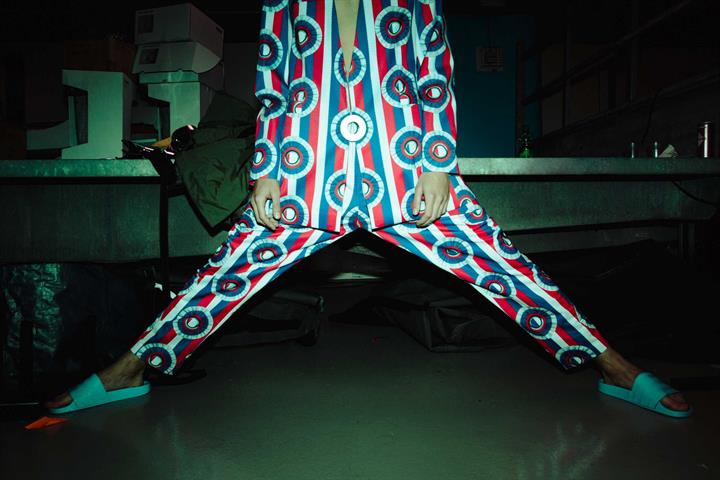
Photo: Urša Premik
Moderna galerija – The main branch of this gallery, to be found near the entrance to Tivoli Park, has a good collection of modern art, as well a nice café in the basement. Opening Thursday, April 25th, 20:00, The Visual Arts in the Kingdom of Yugoslavia, 1929–1941, which then runs until September 15th 2019. This offers “an overview of painting, sculpture, printmaking, drawing, photography, and film from the time the king's dictatorship was set up (6 January 1929) to the beginning of World War II on Yugoslav soil (April 1941)” - you can read more about it here. The museum's Metelkova branch also has a big new show, runing until at least September 2019, an the art of the Non-Aligned Movement, with an example shown below.
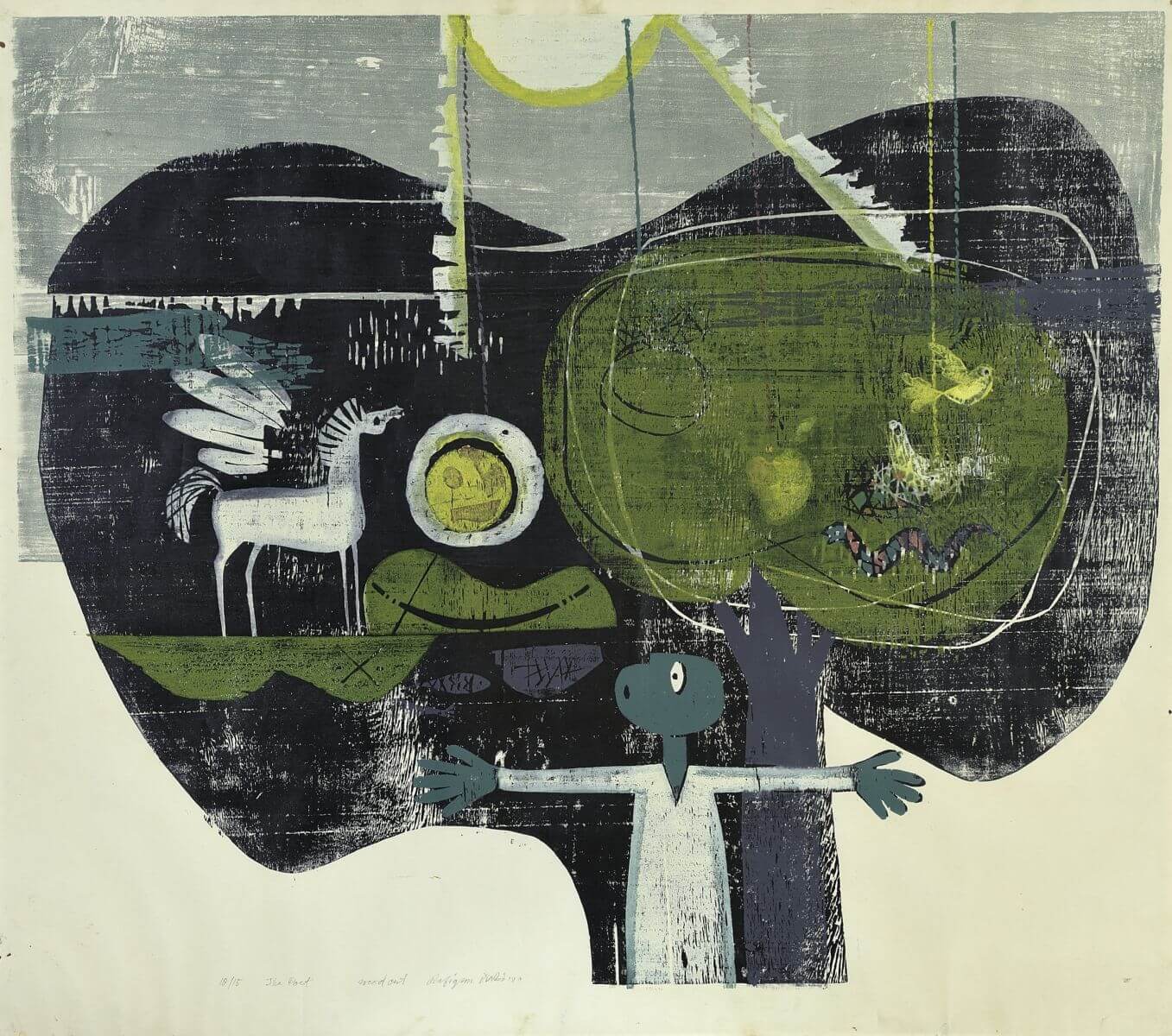
Rafikun Nabi: Poet, 1980, print, 96.5 x 110 cm. Courtesy of the Contemporary Art Center of Montenegro. On display at the Metelova branch of the Moderna galerija
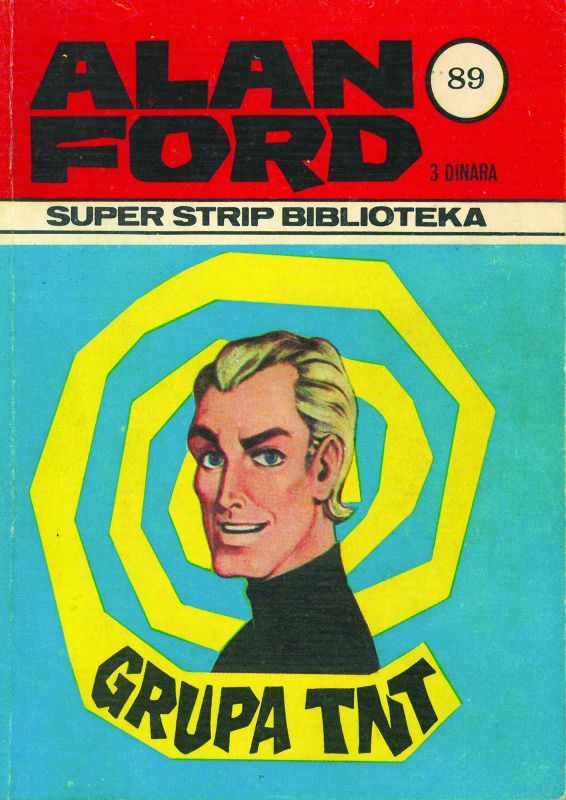
Alan Ford at the National Gallery
National Gallery – The country’s main gallery has “the best” of what’s on offer from the Middle Ages to non-contemporary modern visual arts, and is in a great location for exploring other areas, just by Tivoli Park and opposite the main branch of the Moderna galerija. You can read about our visit to the room containing sacred art from the Middle Ages here. The Space Within the Space: Scenography in Slovenia before 1991 will provide a comprehensive historic, stylistic, visual and theatrical overview of Slovenian scenography until 8 September. There’s also a big show on Alan Ford, one of the great comic books of the Yugoslav era, on until 13 October.
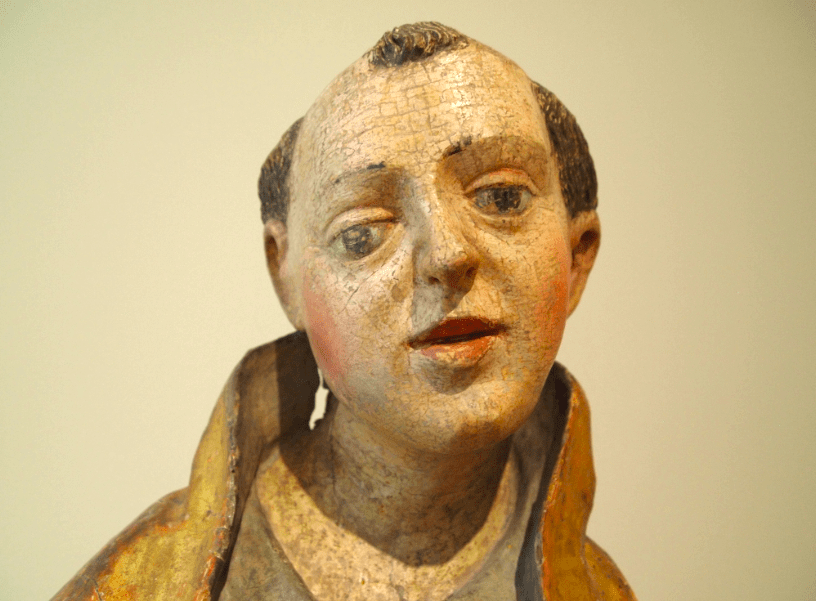
JL Flanner
The real Robba Fountain can be found in the entrance to the National Gallery - the one you see in the Old Town is a genuine fake, as seen below and reported here.
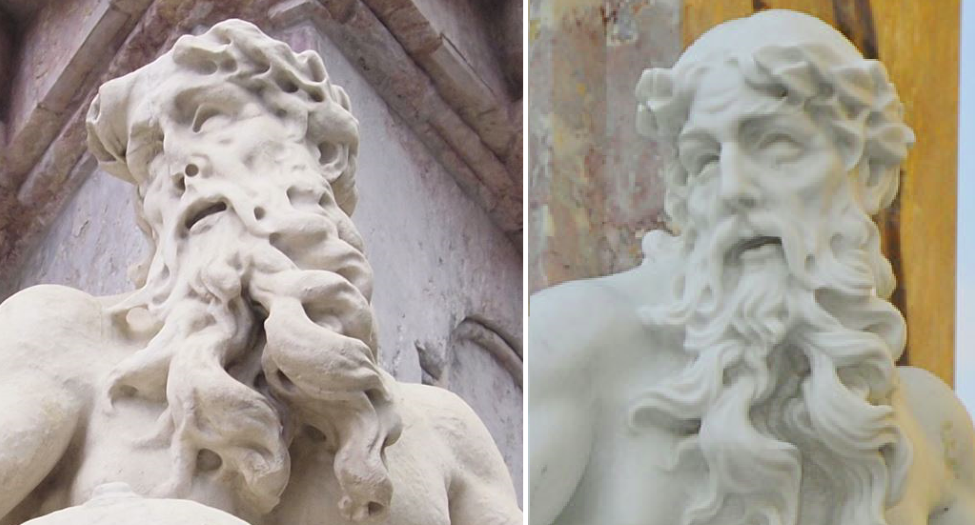
Photo: JL Flanner
National Museum of Slovenia – There’s plenty to see in the permanent collection here, from Roman times, Egypt and more. Meanwhile, the museum's Metelkova branch, located between one branch of the Moderna galerija and the Ethnographic Museum has some rooms on Church art, furniture and weapons, with the latter including more guns than you'll see anywhere else in town, and quite a thrill if coming from a nation where such objects are not household items.
Natural History Museum – On until the end of June 2019 is Our Little Big Sea, which takes a look at the oceans.
National Museum of Contemporary History - Tucked away in park Tivoli, in addition to his permanent collection will be showingIn Search Of Freedom: 1968-2018 until 16 August. Until 2 June there’s From Letters to Facebook: Communication of Slovenian emigrants in Argentina with their homeland through time. Until 29 September there also a retrospective on the photographer Edi Šelhaus, which is being promoted with the following image.
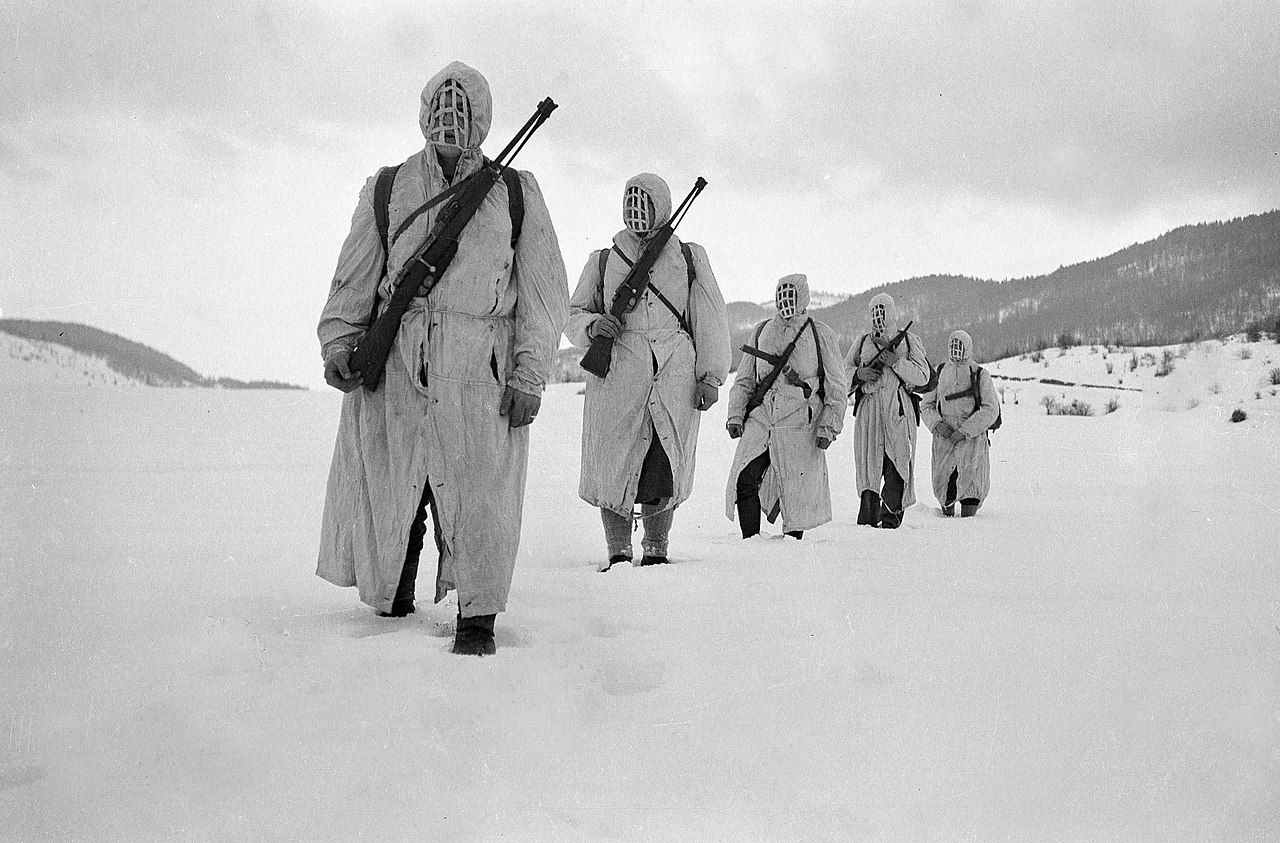
Photo: Edi Šelhaus
Slovene Ethnographic Museum – The museum currently has a temporary show on Bees and Beekeeping, on until June 16 2019, as well two permanent exhibitions. One of these is called Between Nature and Culture, and has a great collection of objects from Slovenia and around the world, well worth the trip up to the third floor to see it (as recounted here). From April 18 until October 19 (2019) you can also see a show calledShamanism of the Peoples of Siberia, from the Russian Museum of Ethnography, Saint Petersburg. The place is located near the newer branch of the Moderna galerija and Metelkova. You can read about this fascinating show here. On until September 15 is Petra Šink: The circle between design and nature, in which the award-winning designer takes visitors through the life cycle of useful products for the home which are made from natural biodegradable fungal materials.
Union is "the Ljubljana beer", but now both it and Laško are owned by Heineken. There are many local brews on offer around town, though, if you want to explore IPAs, stouts, wheatbeers, sours and so on Photo: JL Flanner
Union Experience – The Ljubljana-based brewer has a museum showing the history of the company, with the ticket also including access to part of the factory and a few samples of the product. You can read about our visit here.
Volčji Potok Arboretum - Running until 3 November you can see a large collection of cacti here.
It's not a formal museum, but if you're interested in "Yugo-stalgia" then you'll enjoy a trip to Verba, a small, privately run space that's crammed with objects and pop culture items from the era, and is conveniently located at the start of one of the short walks to the castle. It's also a great place to take pictures, if you leave a donation, and you can read more about it here.
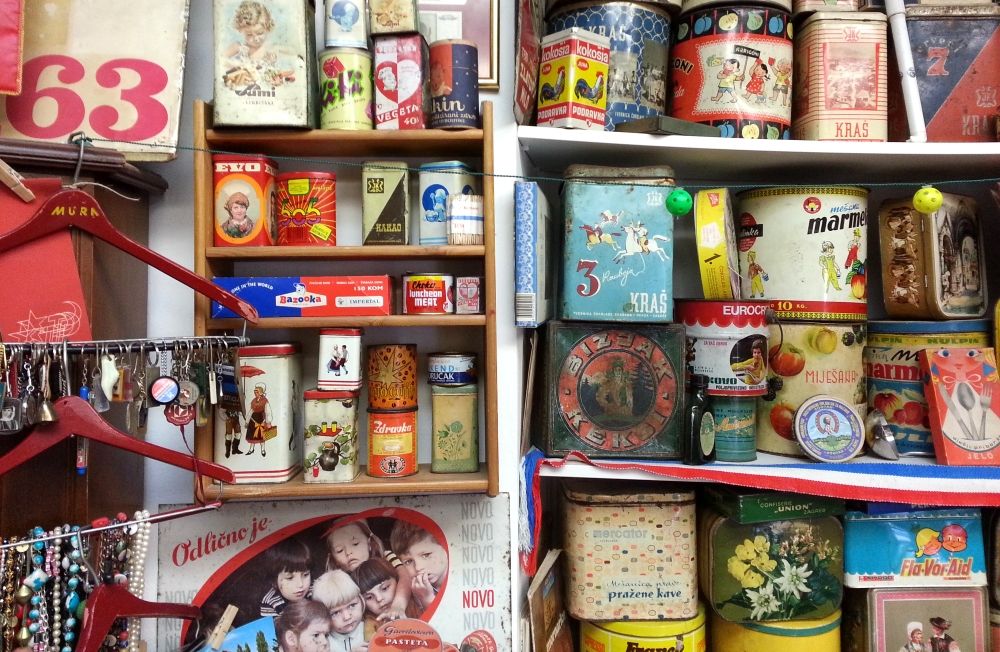
Verba. Photo: JL Flanner
Alternative Ljubljana isn't a museum or gallery, as such, but instead turns the city streets into a museum and gallery. Learn more about their tours of street art, history and LGBT Ljubljana here.
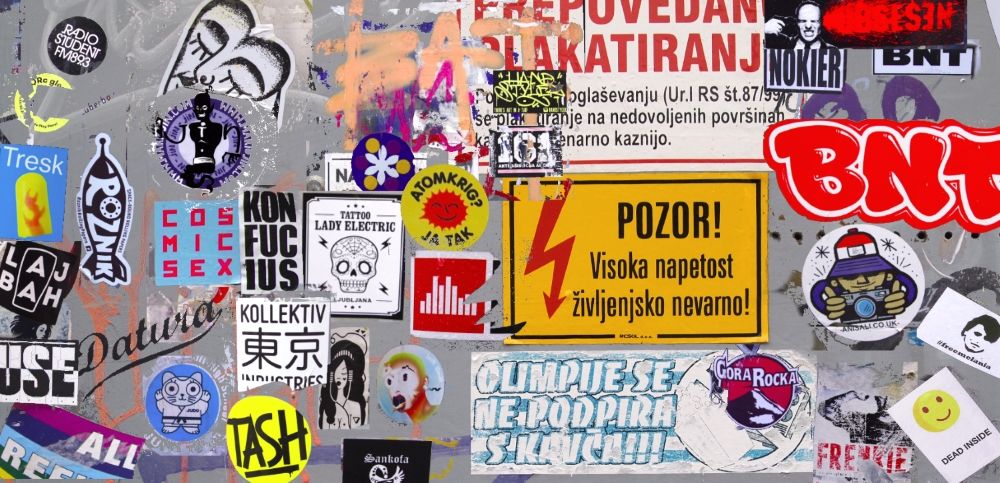
Photo: JL Flanner
Other things to do in Ljubljana
Learn more about Ljubljana with "25 things to know about Slovenia's green city of dragons", or take a look at our guide to spending from four to 48 hours here.
Open Kitchen brings market stalls selling food and drink from some of the best restaurants in town every Friday, from 11am to 11pm, in the square between the cathedral and the river - just follow your nose and the crowds. Read more about it here.
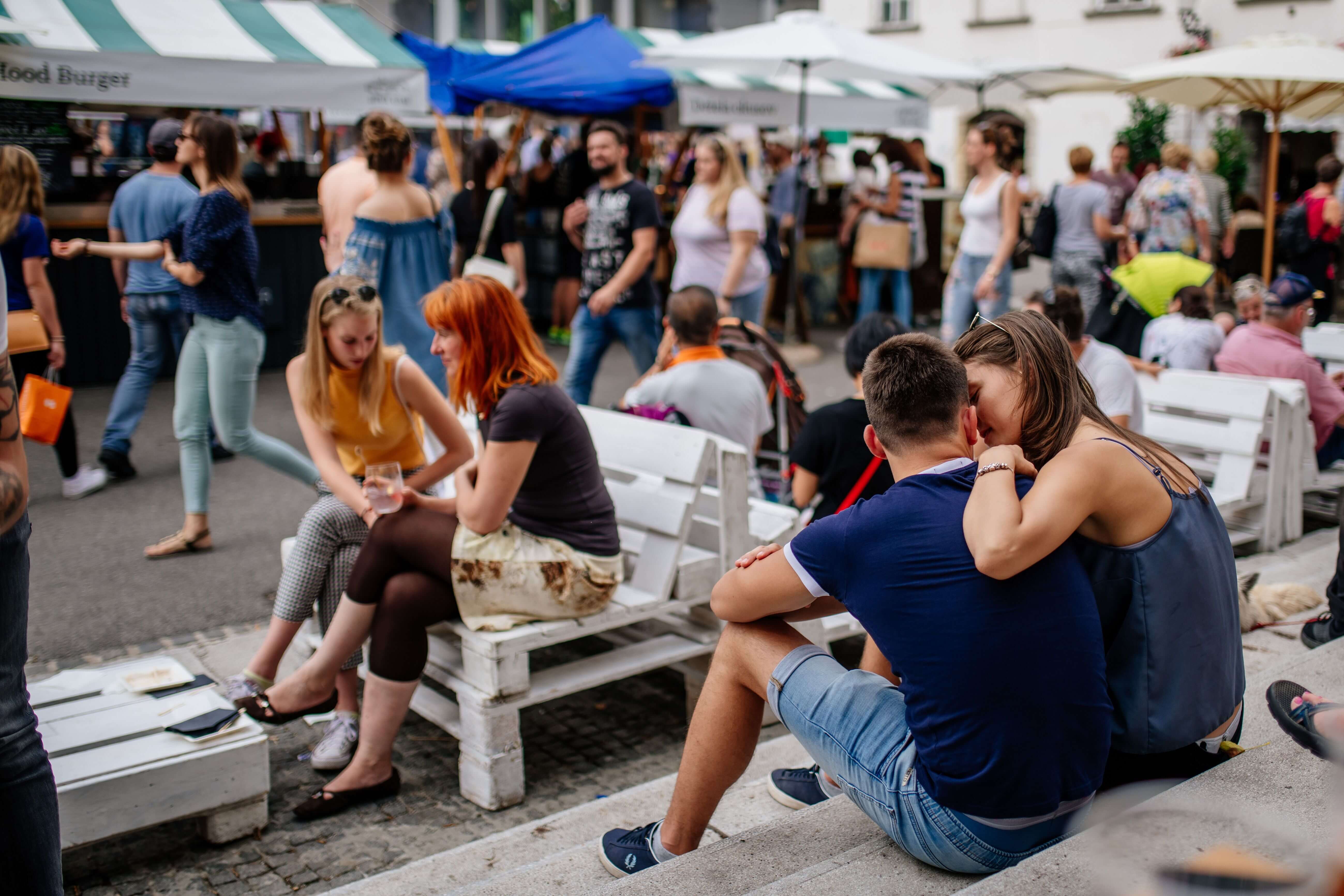
Photo: Open Kitchen
If you'd like to spend an evening painting with others, then take a look at Design with Wine, which organises painting parties on Trubarjeva cesta,
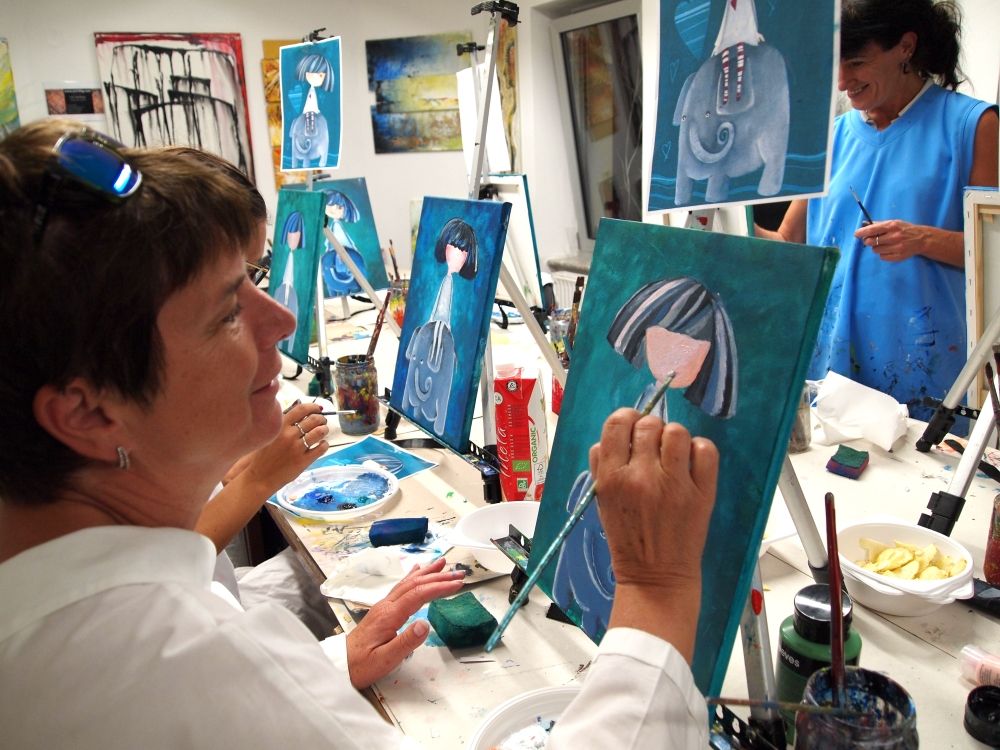
If you want to see some antiques, then check out the wonderful Antika Carniola, as discussed here. The man behind it, Jaka Prijatelj, has a fine eye for life on this street, as you can see on his Facebook account.
Photo: JL Flanner
If you’re in town and want to go jogging or walking in nature, why not take another look at the Castle, with a brief guide to the trails here. If you want something bigger, head to Tivoli Park.
And if you're bored with the Old Town, why not take a walk, cycle or boat ride to nearby Špica and enjoy the riverside life. Learn more about that here.
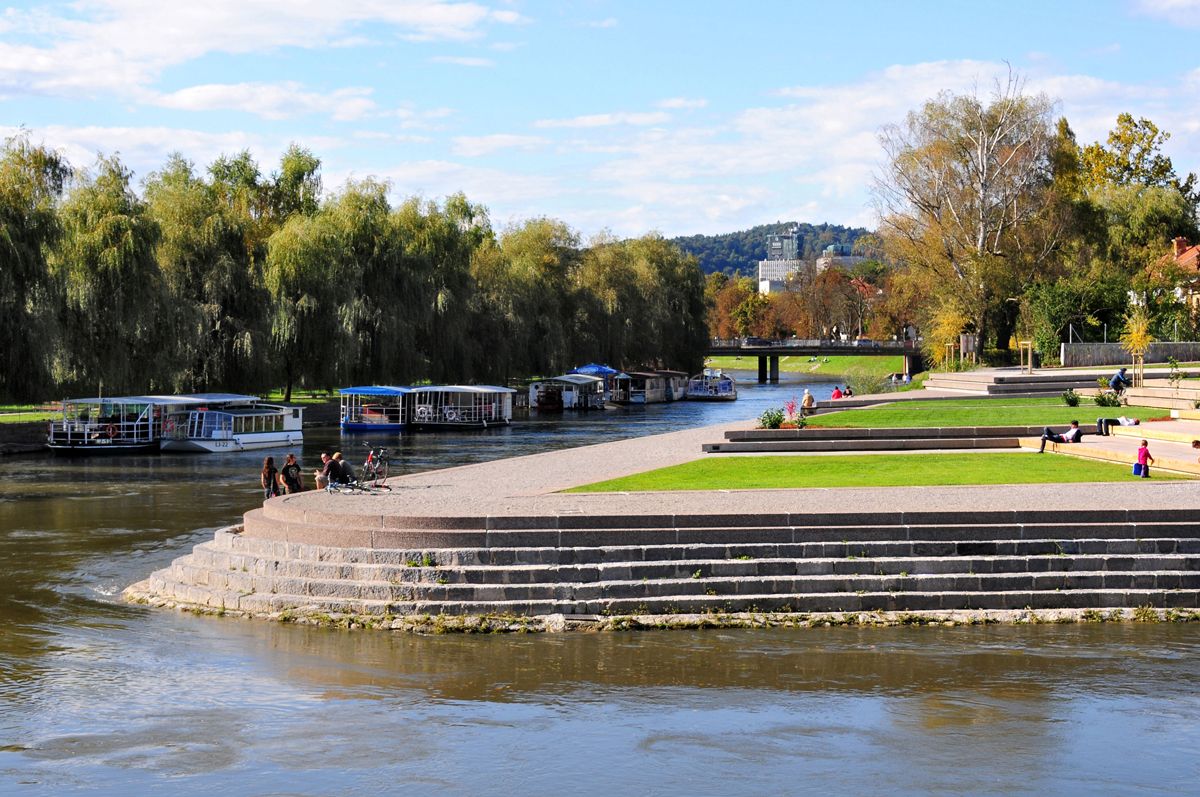
visitljubjana.si
![]()
maxpixel.net, public domain
Want to stretch and breath? Then check out our list of drop-in yoga classes for tourists, visitors and the uncommitted. If you're heading to the coast, check out our interview with a yoga teacher who offers breakfast sessions there, while if you're staying in town (or nearby) and want to try some "family yoga" then you can learn more about that here and maybe get your kids to calm down a moment or two.
Prefer to have someone else stretch you? The check out the totally legit massages you can get from Sense Wellness - either in one of their spas or in you home, office or hotel. (And - to repeat - these are legit and non-sexual in nature)
There are some golf courses near Ljubljana, but even ones further away are not far, as seen in our list of all the golf courses in Slovenia.
![]()
Photo: maxpixel.net, public domain
Daytrips
Most of Slovenia is only a few hours from Ljubljana, and you can easily visit Lake Bled, Lipica Stud Farm, Postojna Cave, Predjama Castle, the coast and other locations, while if you'd like to take a photo of from that bench in Bled, then you can learn how to get there here. If you’re looking for something more ambitious, then check out our recent guide to the 17 members of the Association of Historical Towns of Slovenia. We've also written guides on spending from four to 48 hours in Bled and Piran.
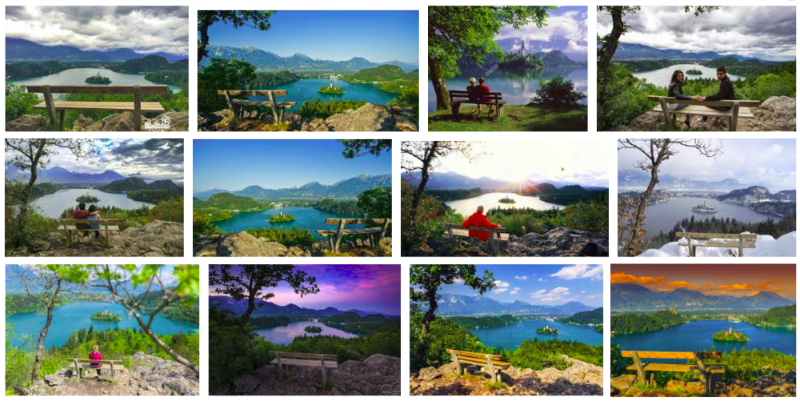
Photo: Google Image Search
Getting around & miscellaneous
If you want to get a Ljubljana Tourist Card, which gives you travel on the city buses and entry to a lot of attractions, then you can read more about that here, and if you want to use the bike share system, as useful for visitors as it is for residents, then you can learn more by clicking this. Visitors with reduced mobility will be pleased to find that downtown Ljubljana is generally rated as good with regard to accessibility, and that there’s a free, city-sponsored app called Ljubljana by Wheelchair highlighting cafés, attractions and so on with ramps, disabled bathrooms and Eurokey facilities, which you can read about and download here. Manual wheelchair users can also borrow, for free, an attachment that will motorise their equipment, as reported here.
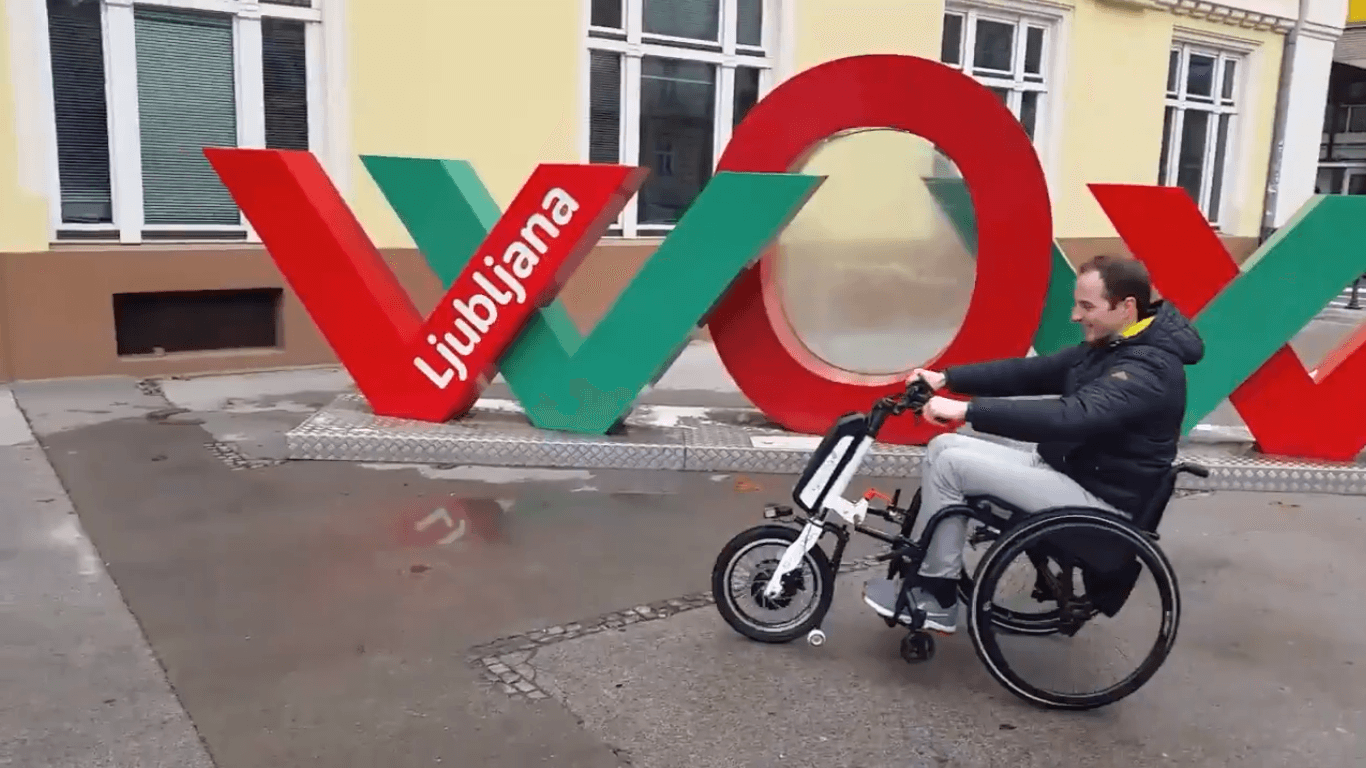
Screenshot from a Twitter video
If you’re driving into town and don’t know where to part, our guide to how to park in Ljubljana is here.
There aren't many places to eat after midnight, and most of them are by the train station, as reported here.
Want / need cigarettes but the stores have closed? Here's an incomplete list of bars downtown that will satisfy your craving for the demon weed. While if you’re having trouble with the ATMs then here’s a guide to the Slovene you’ll see on screen. If you get a hangover then find out where to get paracetamol (and prescription drugs) in Ljubljana here, while details on emergency birth control can be found here.
Ljubljana is a small and relatively safe city, but if need to contact the police then there’s a special number for foreigners, and that’s 113.
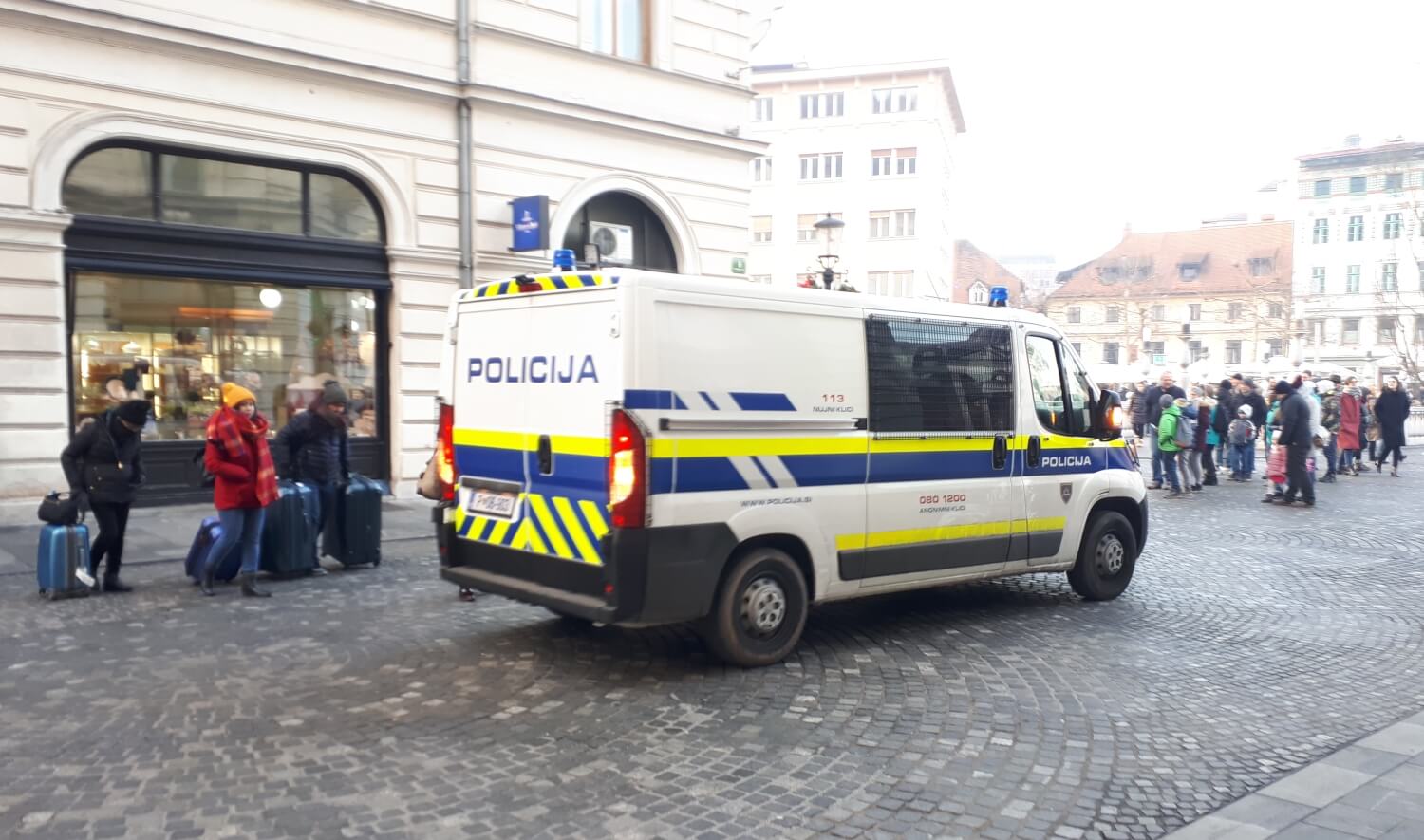
Photo: JL Flanner
Have you tried Slovenian gin yet?
The county is already known for its wine, which is gaining a growing reputation as people start to realise that France isn’t the last word in viticulture. Indeed, it isn’t even the first, with the grape having been turned into an alcoholic drink around 8,000 years ago in Georgia, and the oldest known surviving vine in the world, one that still produces grapes and a few small bottles of wine each year, is in Maribor.
Over the last few years the country has also seen explosion in craft beer producers, with the brews evolving rapidly from IPAs to the full range now offer, from sours to stouts, lagers to saisons. There’s also a rich tradition of brandy and schnapps, but what next for drinkers looking for something special to sample in Slovenia?
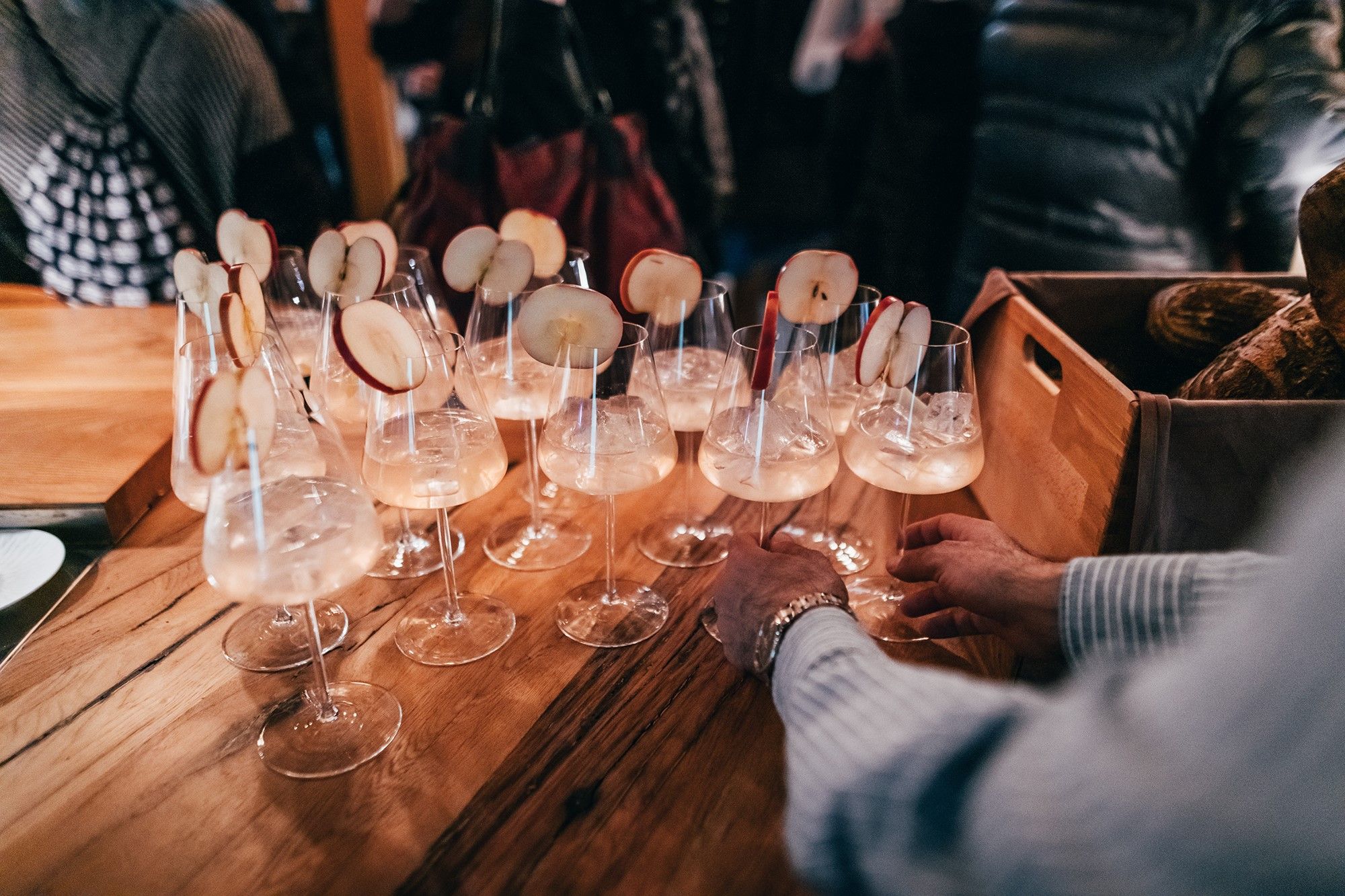
The secret to Slovenian gin is the juniper berries
One answer, it seems, is gin, and those wanting to explore this world of flavour would do well to mark Saturday, 1 June (2019) in their calendars, and book a taxi or designated driver. That’s the date of Brina, the first Ljubljana Gin Festival, to be held in Križanke, not far from the very centre of Ljubljana (see the map at the end of this story).
The event, which is free to enter and set to last from 12 noon to 00:00, will bring together 17 gin makers, distillation experts, mixologists (aka cocktail makers), glassware producers, and chefs, along with those who enjoy the work of such professionals, all dedicated to transforming humble ingredients into memorable experiences, with Slovenian juniper berries – among the best in the world, and a key component of gin – being the foundation of it. Indeed, it’s the Slovenian word for these berries, brinove jagode, that gives the festival its name.
The brands of gin you can try will include - deep breath - Aufbix gin, Berryshka, Bratinov gin, Brin Gin, Broken Bones, Destilarna Karakter, Dingle Gin, Dry Tergeste Gin, GiniBee, Ginious, Gin Monologue, Gin s klanca, Mestni gin, Plymouth Gin (Pernod Ricard) and Santei Gin SKRASA No. 19 (with some details of a few of these here).
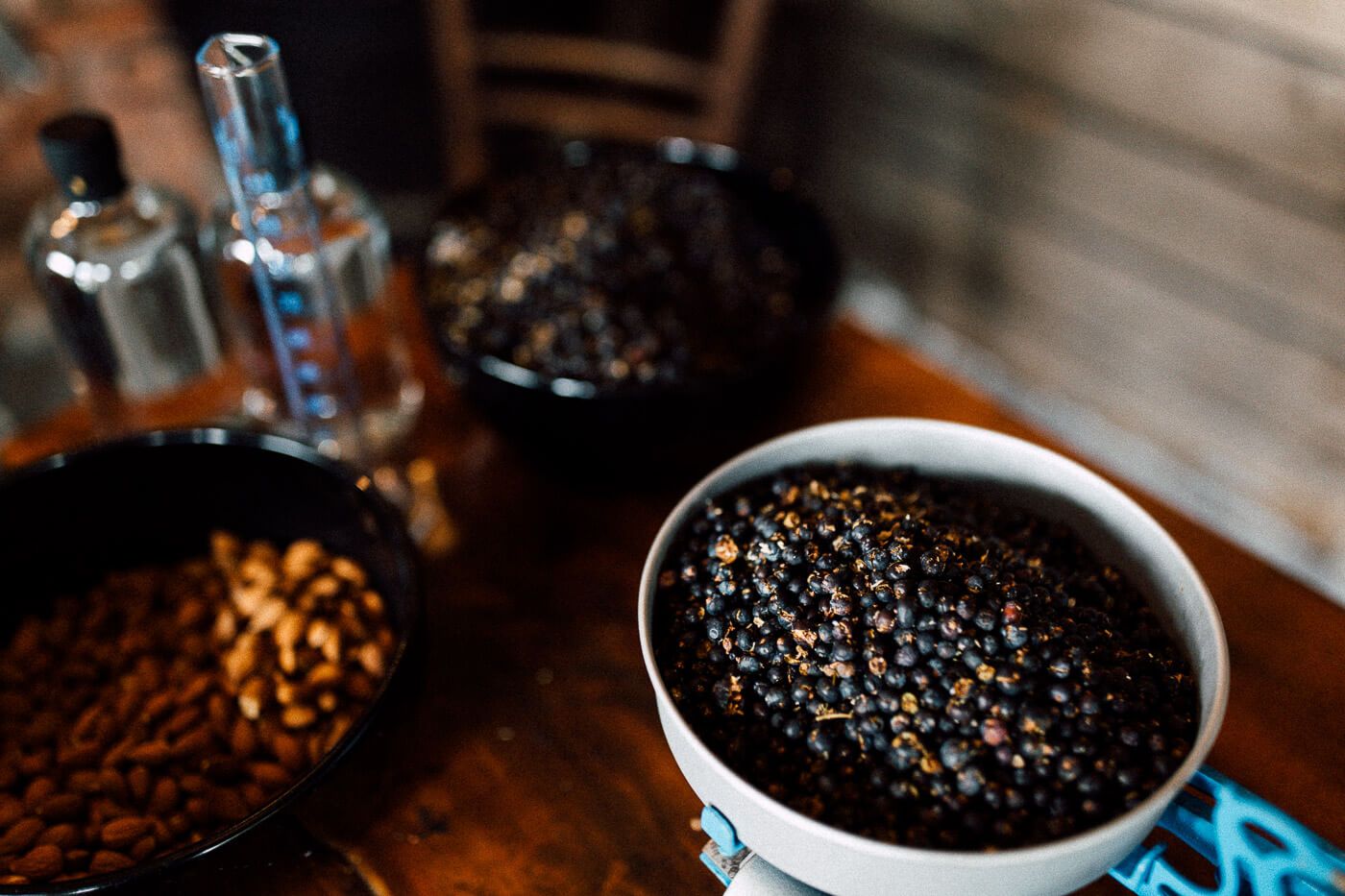
More than gin on offer
You can read more about Slovenian gin here
While there’ll be plenty of drinks offer to enjoy, one thing to consider sampling before going over your personal limit is the Brina cocktail, devised especially for the event. This local invention combines the flavours of Slovenian gin with ginger, apple, and lemon syrup, along with a twist of lemon, a slice of red apple and Fever Tree pink tonic, and is sure to put a smile on your face. Also special to the day is an exclusive festival glass, “Polaris”, produced by Steklarna Hrastnik, as shown below.
(The Brina cocktail is also available at various bars in Ljubljana, including Centralna postaja, Čin Čin, EK Bistro, eVino, Fétiche Bar, Lepa Žoga, Magda, Pivnica Lajbah, Pop’s Place, TaBar, Tozd, Vander and Vinoteka Movia....)
A joint project from the team behind Open Kitchen, Ljubljana Tourism and Gourmet Ljubljana, Brina is intended to be a cosmopolitan affair, and a coming out part of sorts for local gin producers. Among the events on offer is a free cocktail workshop, starting at 15:00, while the culinary offerings will include dishes from Jorg Zupan (Atelje), Jakob Pintar (TaBar), and Igor Jagodic (Strelec).
The fun starts at 12 noon and ends at midnight on Saturday, 1 June (2019), and it all takes place in the beautiful surroundings of the Križanke open air theatre - the Plečnik building that hosts the Ljubljana Summer Festival and can be found a short walk from the very centre of town, as seen in the map above.
Keep up with the daily news in Slovenia by checking the morning headlines here
This schedule was prepared by the STA:
MONDAY, 27 May
LJUBLJANA - Foreign Minister Miro Cerar will host his Czech counterpart Tomáš Petríček, who will pay a working visit.
LJUBLJANA - The Ministry of Labour, the Family, Social Affairs and Equal Opportunities and UNICEF will host a panel debate upon the 30th anniversary of the UN Convention on the Rights of the Child.
BLED - The Foreign Ministry and IEDC - Bled School of Management will host a conference on China and its influence on the global economy.
LJUBLJANA - The Slovenian Writers' Association will hold a meeting to appoint a new president after Aksinja Kermauner resigned at the end of March.
LJUBLJANA - Before starting his official visit, North Macedonian Prime Minister Zoran Zaev will speak at an event hosted by the International Institute for Middle East and Balkan Studies (IFIMES).
LJUBLJANA - The Cankarjev Dom arts centre will present international concerts and dance performances in the new season.
TUESDAY, 28 May
BRUSSELS, Belgium - Prime Minister Marjan Šarec will attend an extraordinary EU summit. The results of EU elections will top the agenda.
LJUBLJANA - Russian Foreign Minister Sergey Lavrov will start a two-day working visit to Slovenia, meeting Slovenian counterpart Miro Cerar, President Borut Pahor and Prime Minister Marjan Šarec.
LJUBLJANA - North Macedonian Prime Minister Zoran Zaev will start an official visit to Slovenia.
PORTOROŽ - Interior Minister Boštjan Poklukar will host a Salzburg Forum ministerial on migration and border control.
LJUBLJANA - The last day of the May sitting of parliament will discuss the opposition-sponsored changes to the acts on the student community and war veterans.
LJUBLJANA - The Chamber of Commerce and Industry will host a conference on smart factories.
PORTOROŽ - The two-day Slovenian Marketing Conference will open.
LJUBLJANA - The shareholders of the insurer Zavarovalnica Triglav will decide on dividend payout.
LJUBLJANA - A two-day regional conference on intellectual property in sport will open.
LJUBLJANA - The Bologna after Bologna show, showcasing a selection of books from the Bologna Children's Book Fair, until 1 June.
LJUBLJANA - The 24th Ljubljana Marathon, taking place on 27 October, will be presented to the press.
WEDNESDAY, 29 May
LJUBLJANA - The Commission for the Oversight of Intelligence and Security Services will interview behind closed doors the former director of the Intelligence and Security Agency (SOVA), Andrej Rupnik, and former Slovenia's border arbiter Jernej Sekolec and agent Simona Drenik.
VRHNIKA - Members of the parliamentary Defence Committee will visit the Slovenian Armed Forces Force Command and meet with Defence Minister Karl Erjavec, Chief of Staff Maj-Gen Alenka Ermenc and the force commander, Brigadier General Milan Žurman.
LJUBLJANA - The Bank Association of Slovenia will host a conference focusing on bank regulation and supervision priorities.
LJUBLJANA - A national conference on the elimination of precarious work featuring parliamentary Speaker Dejan Židan, relevant ministers and other government representatives.
LJUBLJANA - Retailer Mercator is scheduled to publish its results for the first quarter of the year.
MARIBOR - The Employers' Association will present a project on elderly workers and healthy ageing at work.
LJUBLJANA - The Managers' Association will hold a ceremony to mark its 30th anniversary.
LJUBLJANA - The four-day world and popular music festival Godibodi will kick off.
THURSDAY, 30 May
LJUBLJANA - The parliamentary Home Policy Committee will discuss the protection of the Schengen border, changes to the personal name act and draft resolution on the national crime prevention programme for 2019-2023.
LJUBLJANA - The government will hold a regular session.
ZAGREB, Croatia - The operators of the Ljubljana and Zagreb stock exchanges will present the countries capital markets.
KOPER - An Artistic Gymnastics World Cup event will start. (until 2 June)
FRIDAY, 31 May
LJUBLJANA - The ministries of foreign affairs and economy will host a national forum on responsible corporate management and human rights in business.
LJUBLJANA - The Statistics Office will publish data on GDP growth in the first quarter and inflation in May.
LJUBLJANA - Znanstival, a festival of hands-on science; until 2 June.
SATURDAY, 1 June
LJUBLJANA - Doctors and dentists are expected to start working strictly by the workload standards and norms as set out in the 2008 Blue Paper.
KRANJSKA GORA - Lovers of the legendary Pony bicycle will climb the challenging Vršič mountain pass.
LJUBLJANA - Brina, a festival of gin.
SUNDAY, 2 June
LJUBLJANA - A new umbrella organisation of Serbs in Slovenia - the Union of Serbs of Slovenia - will be established.
Mladina: Voters Should Reject Neo-Fascism on Sunday
STA, 24 May 2019 - Taking a look at the state of things in Europe, the left-wing Mladina says on Friday European nations are in for a tough task at this year's EU elections, urging them to vote for parties which could prevent a rise in neo-fascism.
The weekly says the European political class has made compromises in the manner of British PM Neville Chamberlain and has let happen all that a united Europe should have prevented.
All those who believed with all their heart in the European project as a post-WWII safety mechanism against fascism are angry with this kind of Europe.
Slovenian voters will have some hard choices to make on Sunday, also because parties have come up with many rather unconvincing candidates.
Judging by opinion polls, only three parties among the normal Slovenian political parties - those which reject both populism and neo-fascism - have a realistic chance of getting MEPs: the coalition Social Democrats (SD) and the Marjan Šarec List (LMŠ) and the opposition Left.
Translated into political groups in the European Parliament, this means the Socialist and Democrats, ALDE and European United Left, says editor-in-chief Grega Repovž.
In principle, these are the parties, alongside the European Greens, which advocate the foundations of Europe and democracy and represent a bulwark against rising neo-fascism.
The stronger these groups in the European Parliament, the less possibility for Europe to fall into the abyss of fascism, as it did in the early 20th century.
The stronger these groups, the more likely the European People's Party (EPP) will not seek political alliances among the far-right groups.
Since the EPP will undoubtedly remain the strongest group, the elections are not about Europe becoming much better, but about not falling into the abyss again, Mladina says in the editorial headlined Above the Abyss.
Demokracija: A Stronger Border & Higher Pay for Police
STA, 23 May 2019 - Pointing out that police officers risk their lives while ensuring the country's security, the right-wing weekly Demokracija says in its latest editorial that they should be paid more for their efforts, including in strengthening the state and the EU's external Schengen border.
The weekly agrees with the Trade Union of Police Officers (SPS) and its president Kristjan Mlekuš about their take on the problematic situation at the Slovenian-Croatian border, saying that the union's reproval of the government is warranted due to the latter's inaction and lying about actively seeking new staff.
"Police officers are part of one of the most state-forming ministries... They should (like soldiers) be excluded from the public sector's pay system," says Jože Biščak, the editor-in-chief of the right-leaning weekly.
The commentary suggests the funds for their pay rise should be taken out of the amount allocated to NGOs, organisations which, according to the editorial, "would open borders and put citizens in danger" instead of protecting them.
"If they were allowed by the authorities, police officers would much rather be sent to the border and deter illegal migration than act as a fine collector with speed traps at straight road sections," says the editorial under the headline Life North of Kolpa, referring to the border river between Slovenia and Croatia.
Commenting on the state's refusal to strengthen the border security by sending more units and earmarking more funds, the weekly blames "the government's incompetence and incomprehensible empathy towards complete strangers" for the increasing amount of Arabs and Africans entering the country while Italy and Austria are closing its borders.
The EU elections are thus a way of giving one's support to parties which strive for security and preservation of national identities, tradition, culture and family values as well as "the advanced European civilisation", concludes the editorial.
All our posts in this series can be found here
STA, 21 May 2019 - The 13th Wild Flower Festival, held in Bohinj between 24 May and 9 June, aims to answer some of the key questions in tourism and society. It is an excellent example of how natural heritage can be preserved and included into tourism with the collaboration of the local community.
The festival that will last a fortnight will offer visitors a bouquet of events, organised into three main sections, all aimed at showcasing the botanical riches of Bohinj.
Flowers in Art will host concerts and exhibitions, as well as workshops during which visitors will be able to experience traditional customs such as village singing; Flowers in Everyday Life will show how alpine flowers can be used in the kitchen, to make handicrafts etc. and Flowers in Science will host a series of seminars and conferences on the theme of sustainable development.
These numerous events aim to promote the recognition and importance of preserving national heritage, develop out-of-season tourism, and show how ecotourism and alpine farming can ensure long-term economic prosperity for the region.
"We want to encourage youths to take up farming in a way that does not harm the environment; something the people of Bohinj have known how to do for the past 3,000 years," Klemen Langus, the director of Bohinj Tourism, said at Tuesday's press conference,
Agriculture in Bohinj had suffered a downturn in recent years, however, small farms are making a comeback, according to Bohinj mayor Jože Sodja.
Farmers also play a key role in the success of the Wild Flower Festival. They make sure some meadows are mown later and not fertilized with chemical fertilizers, which enables the growth of wild-flowers, Bohinj's trademark. Its amazing biodiversity is famous among experts the world over as an area rich with over 1,000 plant species.
Aside from farmers, locals, associations and centres that support sustainable living collaborate with the festival. The Janez Mencinger Primary School has been a partner of the festival since the very beginning. Its aim is to teach future generations about the importance of environmental preservation; this year, their main themes will be mountain pastoralism and cheese-making.
Visitors to the festival can see the sights during one of the many guided tours. Organizers have received more than 100 bookings, mostly from visitors from England and Germany.
You can learn more about the festival here
Bookmark this link and find the headlines faster each morning, or follow us on Facebook
A schedule of all the main events involving Slovenia this week can be found here
Visiting Ljubljana? Check out what's on this week, while all our stories on Slovenia, from newest to oldest, are here
This summary is provided by the STA:
SDS+SLS lead latest polls ahead of LMŠ, SD
LJUBLJANA - The latest public opinion polls ahead of Sunday's EU elections see the joint list of the Democrats and People's Party (SDS+SLS) as the front runner, followed by the Marjan Šarec List (LMŠ) and Social Democrats (SD). New Slovenia (NSi), the Left and the Pensioners Party (DeSUS) also appear to be serious contenders. Pollster Valicon, the only one that had seat projections, gave SDS+SLS 2-3 seats, with LMŠ and the SD both within reach of 1-2 seats. The remaining seats are likely to be divided among the NSi, the Left and the DeSUS.
Final TVS debate before election dominated by Ibiza scandal
LJUBLJANA - The Ibiza corruption scandal in Austria, the proposed setting up of mixed Slovenian-Italian border patrols and populism were the main topics of the last EU election debate aired by the public broadcaster RTV Slovenija on Thursday evening. The candidates mostly condemned corruption and populism, and said they had never been personally involved in corruption. Only the candidates of the Marjan Šarec List (LMŠ) and Modern Centre Party (SMC) backed the idea by Foreign Minister Miro Cerar for joint police patrols on the border with Italy.
Early voting turnout 70% higher than in 2014 EU election
LJUBLJANA - Early voting in the elections to the European Parliament, which was available in Slovenia between Tuesday and Thursday, saw a nearly 70% higher turnout than five years ago, the National Electoral Commission announced, interpreting this as a good sign for the main vote on Sunday. Nearly 31,360 voters or 1.84% of the electorate turned out, while five years ago, the turnout was 18,483 or 1.09%. While the early voting took place at 59 locations, Slovenians will be able to cast their votes at 3,005 locations between 7am and 9pm on Sunday.
NLB bank's Q1 net profit flat at EUR 58 million
LJUBLJANA - NLB, Slovenia's largest bank, reported a net profit of almost EUR 58m for the first quarter of the year, up marginally from the same quarter in 2018. Total net operating income amounted to EUR 133.8 million, a 3% increase year-on-year, underpinned by higher net interest income, which rose 6%, and higher net fees and commissions, which were up 2%. The volume of gross non-performing loans dropped by EUR 43.1 million (7%) over the end of 2018.
Luka Koper reports stagnant Q1 profit
KOPER - Port operator Luka Koper reported a net profit of EUR 14.4 million for the first quarter of this year, up 1% over the year before. Sales revenue rose 8% in the same period to EUR 60.7 million, show unaudited results. EBITDA slipped 1% to EUR 24.4 million, as did pre-tax profit (EBIT), which totalled EUR 17.1 million. The figures reflect a significant decline in total tonnage the port handled, which contracted by 3% to six million tonnes. The company spent EUR 12 million on investments in fixed assets, a nearly six-fold increase over the same period last year.
Traffic safety boss sacked over road conduct
LJUBLJANA - Igor Velov, the head of the Traffic Safety Agency, was dismissed by the government after days of media reports about unusual conduct with the agency's car, which was found near the post office of Velov's home town parked and locked, with a punctured front tire and damage to the front and rear. Police looked into the matter and found nothing suspicious, but tabloids found two witnesses who saw him step out of the car said there was no doubt he had been drunk.
Tourist arrivals, nights up 3% in Q1
LJUBLJANA - More than 921,000 tourist arrivals and more than 2.5 tourist nights were recorded in Slovenia in the first quarter of the year. Both figures are by 3% higher than the ones from the same period in 2018, shows data released by the Statistics Office (SURS). The two figures for foreign tourists and nights they spent in Slovenia in the same period was up almost 1% and 2% year on year, respectively. Italy was the most important market for Slovenia in both the first quarter and March, with Italian tourists accounted for 16% of all tourist nights in March.
Business sentiment down y/y, slightly up compared to April
LJUBLJANA - Business sentiment in Slovenia in May deteriorated over May 2018 but was slightly higher than in April, according to data released by the Statistics Office. The index was at 7.8 percentage points (p.p.), one point higher than in April and 4.5 p.p. lower than a year ago. Year on year, the index was dragged down by a drop in sentiment in manufacturing, as well as the services sector. The retail sector had a positive effect on the index. The monthly increase was attributed to an improved business sentiment in manufacturing, in retail and among consumers.
A year on, GDPR pushes up requests for personal data abuse inspections
LJUBLJANA - Since the General Data Protection Regulation (GDPR) took effect across the EU a year ago, the Slovenian Information Commissioner Office has detected an increase in the number of requests for inspections into personal data use. Information Commissioner Mojca Prelesnik believes this show the public knows the GDPR quite well. In 2017, Prelesnik's office conducted 655 inspections, while by mid-May this year, the number has already exceeded 500. Moreover, her office received nearly 70 official reports about personal data violations between 25 May 2018, when the regulation took effect, and the end of the year.
Koper club wins first national title
KOPER - Sixt Primorska, a basketball club from Koper, emerged from the shadow of its bigger and more storied rivals by winning its first national championship title to become only the fifth team in Slovenia to win the championship. Defeating Petrol Olimpija 68:63 for a perfect 3:0 run in the final series, Sixt Primorska clinched its fourth title of the year, having already won the national cup, the super cup, and the second division of the Aba League.
Photos by Wilhelm Heiliger on display at Pilon Gallery
AJDOVŠČINA - An exhibition of works by Slovenian-born photographer Wilhelm Heiliger opened at the Pilon Gallery in Ajdovščina. Dubbed Meditation and Photography, the exhibition is a part of a joint project of six Slovenian galleries presenting Heiliger's art. Exhibitions presenting Heiliger will be set up in galleries in Nova Gorica, Lendava, Kranj, Sežana and Radovljica between May and December. The exhibition in Ajdovščina, open until 16 June, will showcase Heiliger's recent photographs taken in the Goriško and Kras regions.
STA, 24 May 2019 - All the latest public opinion polls ahead of Sunday's EU elections see the joint list of the Democrats and People's Party (SDS+SLS) as the front runner, followed by the Marjan Šarec List (LMŠ) and Social Democrats (SD).
New Slovenia (NSi), the Left and the Pensioners Party (DeSUS) also appear to be serious contenders for an MEP seat, while the prospects of the Alenka Bratušek Party (SAB) and National Party (SNS) seem to be more remote.
Overview of the latest public opinion polls ahead of the 26 May elections to the European Parliament
Ninamedia* Valicon** Parsifal*** SDS-SLS 25.0 22.1 16.4 LMŠ 20.6 18.9 15.5 SD 15.0 15.8 12.6 NSi 10.4 7.7 3.3 Left 8.3 5.9 4.1 DeSUS 7.3 5.5 7.4 SAB 4.3 5.0 2.8 SNS 3.2 6.2 3.3 Greens of Slovenia 2.5 2.8 0.5 SMC 1.5 4.0 0.2 Let's Connect 0.7 1.2 0.8 Good State 0.5 1.8 0.9 Homeland League 0.4 1.9 0.5 ZSi 0.3 1.1 0.4 Don't know / / 28.9
*Ninamedia: projection based on telephone poll conducted between 20-23 May, 675 respondents
**Valicon: projection based on web panel survey on 21-22 May, 1,012 respondents
***Parsifal: poll conducted 20-22 May, 683 respondents, undecided voters included in final tally



